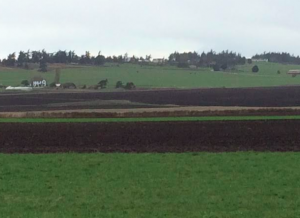
Public lands in the United States go by a variety of names: Parks, forests, monuments, historical parks, recreation areas, seashores, refuges and more. Though confusing to the public (and even, at times, to agency employees!), each appellation has a “genealogy” of sorts, a history that, if traced, offers insights into the goals and motivations of those who initially pushed for the creation of different types of protected areas. I recently visited two of the three “National Reserves,” Ebey’s Landing National Historical Reserve in Washington State and the New Jersey Pinelands National Reserve and began to wonder when that term first came into use (NB: Both are Affiliated Areas, not National Park units)
Congress designated both National Reserves in 1978. They were included in the landmark National Parks and Recreation Act, a gigantic public lands omnibus bill put together, in large part, by Congressman Phillip Burton (D-CA). Among other items, the legislation created more than a dozen new NPS units, authorized new additions to the Wild and Scenic Rivers System and expanded wilderness areas in National Parks by close to 2 million acres.
These were heady times in the park service – as least as far as park creation goes – but it was also a moment that would soon pass, probably faster than anyone could have guessed. Within only a few years, Ronald Reagan would be elected President, bringing a new era of uncertainty and austerity to conservation practice.
But, back to 1978. Where did the bill drafters even get the idea to use the term “National Reserve?” One primary source was the NPS’ April 1976 Revised Land Acquisition Policy. In this document, the term “National Reserve,” also identified as an “Area of National Concern,” is defined in the following way: Federal, State, and local governments form a special partnership around an area to be protected. Planning, implementation and maintenance is a joint effort and is based on a mutual desire to protect the resource. Under this concept, the Federal Government, through the National Park Service, may acquire core zones intended to protect and permit appropriate use of the most vital physical resources within authorized boundaries of the area. The balance of property within these areas may be protected through a combination of acquisition and management by the State and local governments, and the development of zoning or similar controls acceptable to the Secretary of the Interior.
If this sounds innovative, it was! The 1970s were a period of experimentation in land use, especially around the idea of regional planning and partnerships. In fact, in 1971, the newly formed Council on Environmental Quality issued a report on the trends, going so far as to label them a “Quiet Revolution.” The term “Areas of National Concern,” has its roots, at least in part, in attempts to pass National Land Use legislation between 1970 and 1975. Ultimately unsuccessful, a key part of the effort had been to identity regions or landscapes necessitating additional attention from state and federal agencies, i.e. Areas of National Concern.
The idea of creating National Reserves caught on – in fact, an attempt was even made in Congress to create a whole system of reserves. Spearheaded by members of the New Jersey delegation, the bill never gained significant support.
Once the idea of a system of reserves lost momentum, individual members began to work to designate reserves in their home districts. Existing efforts in Washington State (Ebey’s) and New Jersey (the Pinelands) fit the description contained in the 1976 park service policy language, especially in regards to proposed partnerships Though radically different in size, resources, and eventual administrative structure, both efforts shared key traits: mixed types of land ownership, rapidly growing populations and long-standing resource uses (ex. agriculture) that many residents wanted to see carried forward into the future. Significantly, management in each of the reserves is quite distinctive – a sign that local input went into the planning and implementation process.
Do you know more the history of “Reserves.” Please share in the comments!


